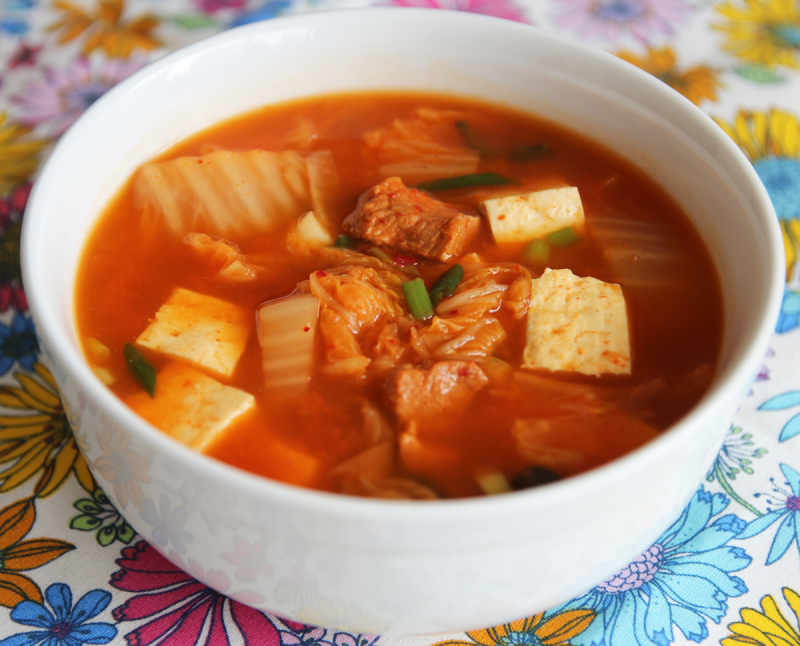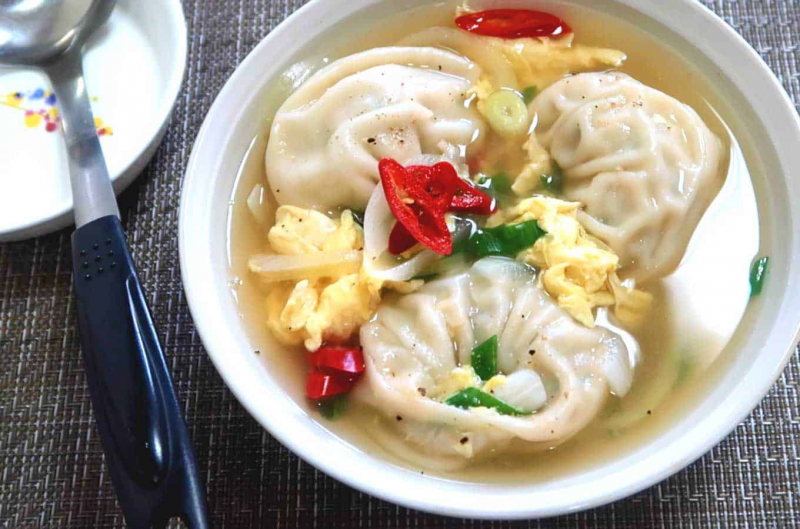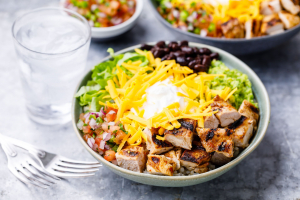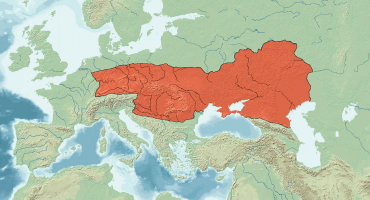Top 10 Foods you can't miss when visit Korea during winter
Korea is not only known for its unique cultures, beautiful tourist attractions but also famous for its unique 4-season cuisine, attracting any visitor to the ... read more...land of Kimchi. The most prominent of which are Korean dishes in winter. In the midst of the typical cold of winter here, these dishes both keep warm and provide enough energy for the body. If you have the opportunity to visit this place in the cold season, you must try these 10 special dishes!
-
Sundubu jjigae (Spicy soft tofu stew) is a traditional Korean dish made with silky soft uncurdled tofu coated in a spicy and flavorful broth, to be served alongside a bowl of steamed rice. It is made with a special type of fresh, uncurdled tofu (sundubu or soondubu) with an extremely soft texture, as the name suggests. Gochugaru, or ground Korean chili pepper, adds heat to the stew. Kimchi, pork, shellfish, and mushrooms are all common add-ins, and they all appear here.
Sundubu jjigae is often served to boil hot in a clay pot and is eaten with a nice bowl of hot rice. Especially with the autumn weather and winter coming up, a bowl of hot soondubu jjigae is definitely a comfort food that can warm you up. It’s hot, spicy, filling, comforting, delicious, soft tofu stew and has many reasons to be one of the most popular items in Korean restaurants. During the winter, there's nothing like escaping the cold and savoring a steaming bowl of real sundubu!

Photo: Maangchi.com 
Photo: FutureDish.com -
Kimchi, Korea's national cuisine, is a spicy pickled cabbage eaten as a side dish with virtually every meal. Kimchi stew (also known as kimchi jjigae or kimchi chigae) is a dish made with kimchi and other ingredients such as beef, onions, garlic, and tofu. It's intended to be consumed slowly, and it's served to steaming hot.
Kimchi jjigae is a spicy, substantial, and flavorful Korean dish that may be eaten anytime and anywhere. It's one of Korea's most popular stews, and it's served at many traditional Korean meals and restaurants. If you're going to create kimchi jjigae, keep in mind that it's going to be spicy. Really, really spicy. That's why it's served with a lot of white rice, to help balance out all that heat.
The main ingredient includes kimchi cabbage, tofu, potatoes, pork, or seafood,... The combination of the sweet and sour taste of kimchi and the pungent taste of Korean paprika helps stimulate the taste buds, It also helps to warm up the body temperature. This dish is a popular, simple, easy-to-cook soup that is always included in daily meals or restaurants here. That's why the dish is always seen at almost every meal in Korean movies.

Photo: Maangchi 
Photo: Korean Bapsang -
A warm beef broth with dumplings and gently cooked ribbons of eggs topped with green onions and nori is Mandu Guk, Korean for dumpling soup (roasted seaweed). It's a quick and delicious dish to make on a cold day when you don't want to cook anything fancy.
The main ingredients that make this dish great: Sliced sticky rice cake, mandu (similar to Chinese dumplings) with eggs, seaweed, onion, pepper. This is not only a favorite dish at the end of the year but also on the first days of the new year, it also brings a good meaning. Koreans believe that if you eat a bowl of manduguk, you will be 1 year older. That's why they consider New Year's Day like a birthday.

Photo: FutureDish 
Photo: StockFood -
Another popular Korean winter dish is beef bone soup (Seolleong-tang). The dish began to appear in Korea around the 15th century. In the reign of King Seongjon, the rituals were usually initiated by the sacrifice of a cow. At that time the dish was called "snow-covered soup" then called under the name Seolleongtang from 1910.
The dish is made with a combination of beef bone broth with onion, Korean radish, garlic, and pepper. You can serve the soup with just rice and kimchi, or you can make it with radish and add sliced brisket meat and noodles for an even more delicious meal. Seollangtang is usually served almost bland so that each person can add his or her own amount of salt, pepper, and scallions. It is a staple of Korean households and although it’s a year-round type of soup, it’s especially popular of course during a long cold winter.

Photo: Maangchi 
Photo: Korean Bapsang -
Bungeoppang originates from a similar Japanese treat, Taiyaki. Taiyaki is also a fish-shaped treat, which is filled with red azuki bean paste. Taiyaki was introduced to Korea during the 1930s, and over time, Korean street food vendors have adapted the dish to make it their own. For example, bungeoppang is smaller in size when compared to teriyaki.
Literally “carp bread”, bungoeppang goldfish-shaped snacks are like the most commonly sold winter snack food in South Korea. Take a bite into this delectable flour pastry stuffed with red bean paste that is grilled to a nice brown.
You won’t be disappointed by the crispy outer layer or the mildly sweet inner filling. One of the popular Korean winter street foods, you don’t have to worry about it breaking your budget, as both bungeoppang (and the similar ingeoppang) can be bought in schools of three to five for around KRW 2,000.

Photo: FutureDish.com 
Photo: Chudu24h.com -
Korean spicy chicken stir fry (also known as dak-galbi) is spicy chicken stir-fried in a large pan, which is often a cast iron pan, come from Chuncheon, Gangwon Province (near Nami Island area) Korea.
The spicy taste, while eating and rubbing, is very suitable for the cold atmosphere at the end of the year.
Chopped chicken is marinated in a mix of spicy Korean sauce then stir-fried with rice cakes, sweet potatoes, green cabbage, and perilla leaves. The chicken pans, when brought out, always smoke with their rich aroma and flavor, attracting people around. Nowadays, there are many variations on dak galbi one of which includes cheese dak galbi. You can dip the cooked dak galbi in melted cheese from the pan. So yummy!

Photo: Maangchi.com 
Photo: Christieathome.com -
SuJeongGwa (수정과, Korean Cinnamon Punch) It is a popular traditional dessert drink along with Sikhye (a sweet rice drink). In addition to favorite foods in winter, Koreans also choose their own very special drinks. Besides hot coffees, sujeonggwa is the most popular choice. It is particularly consumed during Korea’s festive holidays such as New Year's Day and Moon Festival periods (Chuseok, also known as Korean Thanksgiving Day). It is known to help digestion and maybe that’s why it’s often served after having Korean BBQ at a restaurant.
This is a secondary Korean tradition made from dried persimmons, honey, brown sugar, cinnamon, and a few details put in place. The drink is sweet and the combined aroma from ginger and cinnamon sticks gives a warm feeling, which is very suitable for enjoying in winter.

Photo: Coreanderandlace.com 
Photo: Carolinescooking.com -
Hoppang is a popular hot food in Korea, particularly during the winter months. It's pre-cooked rice or wheat flour dough ball stuffed with red bean paste or various fillings including vegetables, pizza, curry, and more. Hoppang, like Chinese Doushabao, is steamed to keep warm and sold during the winter months at small food markets or convenience stores for less than a few dollars.
The name Hoppang is formed from the hieroglyph "ho ho" in the Chinese language. Korea, it sounds like the sound when people blow hot food and like the happy laughter in a family when they eat Hoppang together. Hoppang is commonly found outside of Korea in the frozen section of Korean supermarkets, where each bun may be steamed or microwaved and eaten in minutes.

Photo: Twitter 
Photo: Luhanhvietnam.com.vn -
Besides hotteok, gyeran bbang (계란 빵) is also a scrumptious cake that is always loved. This cake is made with ingredients as its name suggests (in Korean, 계란 is egg and 빵 is cake). Invented in the 1960s, this is a yummy, oblong-shaped Korean street food stuffed with eggs and sometimes cheese and bacon. Similar to American pancakes with eggs and bacon, Gyeranppang is a Korean delicacy with all that wrapped into a bun.
It is a popular winter snack in Korea best enjoyed hot and fresh when it’s freezing outside. One could say that enjoying this street food feels like getting a warm hug. You can easily find street vendors baking tons of this fluffy snack in special oblong molds during winter. Especially if you’re are hungry! Cracked eggshells are piled high and you can’t miss the steam and smoke. The vendors wrap the hot bread in a little cardboard paper sleeve so you can hold it when it’s still hot. It’s cheap and delicious and a very simple snack to eat.

Photo: Flickr 
Photo: Foodadvice.com -
Next, it must be mentioned hotteok - street food that conquers diners in every season of the year. This is a special cake made from a sweet mixture of brown sugar, honey, cinnamon, and crushed peanuts. The dough part of hotteok is made from flour, water, milk, sugar, and part yeast. The dough is left to rest for a few hours until fully expanded. Each round ball will be rolled out by the chef, spread evenly, and then added to the center of the cake dough, a mixture of brown sugar, honey, crushed peanuts and cinnamon.
Each cake after being molded is placed on a large frying pan with oil and pressed into a large circle by a special tool with a round iron frame and wooden handle. Just like that until both sides are golden and crispy, then the cake is brought out to drain the oil and can be enjoyed immediately.
Nowadays, hotteok is made more diverse with many different fillings such as red bean, chocolate, etc., suitable as well as creating a new taste for people to enjoy, but whatever it is, this is still a taste. Hotcakes, best eaten in winter.

Photo: Thebakeanista.com 
Photo: Pickledplum.com































